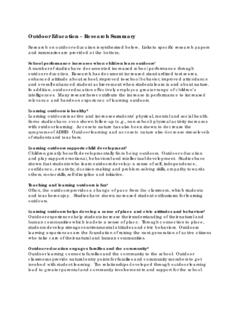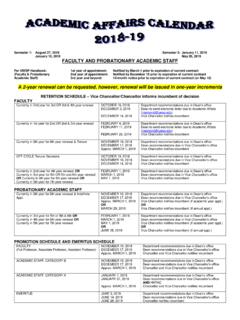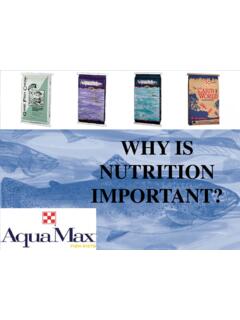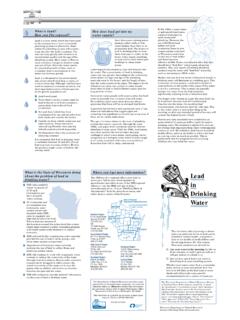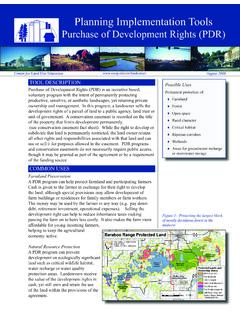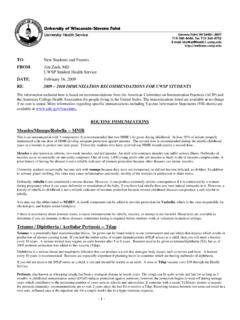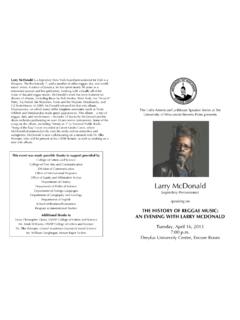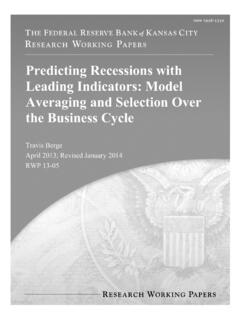Transcription of The Art and Science of Predicting Enrollment - UWSP
1 The Art and Science of Predicting EnrollmentEd MillsAssociate Vice President for Student Affairs Enrollment and Student Support Harres MageeEnrollment AnalystEnrollment Management is both Art and ScienceEnrollment managers, committees and analysts often develop annual Enrollment prediction models using established what do you do when environmental factors change so quickly and so radically that your predictions need to change just as fast?This SessionTo help, we will offer insights on:Reviewing and adjusting the main external and internal variables that Enrollment managers additional data to help you more accurately predict and influence your Enrollment . Developing tools that will help you change your Enrollment predictions as quickly as the environment changesTypical Enrollment FunnelBuilding the Funnel 18 Month CycleStep 1 Identify the Goals and TargetStep 2 Measure Attrition and GraduationStep 3 Measure ContinuationPredict the Continuation RatesStep 4 Calculate the Delta to TargetStep 5 Build Recruitment StrategyPredict the Yields Admission/Re-EntryAdmission/Re-EntryAdmi ssion/Re-EntryAttrition/GraduationAttrit ion/GraduationRetention and Progress to Degree Typical Enrollment Growth ModelOne Definition for Enrollment Management" Enrollment management is the collaborative use of targeted strategies throughout the campus which are designed to meet the University s goals for student recruitment, retention and graduation.
2 " Suddenly your analyst says: all our models need to change " Enrollment management is the collaborative use of targeted strategies throughout the campus which are designed to meet the University s goals for student recruitment, retention and graduation." " Enrollment management is the collaborative implementation of a strategic Enrollment cycle designed to quickly adapt to changing environmental factors to meet the University s goals for student recruitment, retention and graduation." Strategic Enrollment Management Cycle Admission/Re-EntryAdmission/Re-EntryAdmi ssion/Re-EntryAttrition/GraduationAttrit ion/GraduationRetention and Progress to Degree Growing EnrollmentEnrollment (with continuing students)New Student AttritionNew Student New StudentAttritionAttritionMaintaining EnrollmentEnrollment (with continuing students)New Enrollment New Enrollment AttritionAttritionAttritionDecreasing EnrollmentHow do we keep our Enrollment models Strategic and adapt them to sudden changes?
3 Where are Changes Happening? Orders to achieve new targets?Adjustments to Institutional Capacity?Fluctuations in the Recruitment Market?Changes Institutional Enrollment FlowTarget Schizophrenia?SituationEnrollment ModelIn 2009-2010 Academic Year our Chancellor s Office (CO) requested we maintain static Enrollment (though demand was increasing) The 2010-2011 AY planning the CO targets were reduced by September, the CO received funding to increase target by + the end of September the CO increased the target by + Mid- October the CO again increased Enrollment target by + the end of that same Mid- October day, the CO again increased target by an additional + Finally, for the 2011-12, The CO dropped our coming year target to meet anticipated state funding by 13 ????CSU targets are based on FTES. As such, small changes in AUL can create large variations in FTES.
4 If we want to drive FTES up, we might need to bring headcount down. Carpel Tunnel Capacity Syndrome?One-time funding in 2010-11 suddenly provided a mechanism to create many new courses for fall 2011 increasing capacity (after having spent a year decreasing capacity).The CSU had already created a graduation initiative and developing many new courses fell in-line with objectives to facilitate , Restrict, Restrict SPEND!Fall 2011 we hit a new AUL record thanks to one-time funding allowing for added sections Drive Those FTES Up!024681012 Avg. Unit LoadResident FTES (to target)= 23,109 Resident FTES Target = 21,625 Difference= +1,484 Outcome= + (with a slightly smaller headcount than initially projected 28,019) Outcome for Fall 2011 Good Enrollment managers keep a close watch on their primary recruitment markets (headcount and mix of students).
5 But where are you getting the data and how valid is it? Market FluctuationsHigh School Graduation by State (California) 024681012 MarketHigh School Graduation by Local Region (Sac. Region)024681012 MarketProjections Check the Expiration DateEnrollment Flow Famine, Flood or Holding Your OwnEnrollment managers often become masters at Predicting yields, retention, continuation, progression, etc. Measuring ContinuationTotal EnrollmentContinuing StudentsContinuation RateDelta (fall to fall & Spring to Spring)Fall 200829,022---Spring 200926,97723, 200929,24920, 201025,63825, 201027,03519, 201126,49123, 201128,01919, Revelations?What do you do when your projection models need to be more based on the future than the past?EM Pop QuizCan a continuation rate ever be more than 100%EM Pop QuizCan a continuation rate ever be more than 100%YES!
6 But how?Always Disaggregate, Evaluate and Re-computeSpring 2011 CSUS had 8,748 SeniorsFall 2011 CSUS continued 8,836 SeniorsThat s 101% continuation rate how did we accomplish that?Build tools that allow you to change each of your key variables as the strategic Enrollment cycle changes. Hunt for Red October ExampleOne Possible Answer:Scenario BuildingReferences and ToolsBuild Scenarios on All Key Enrollment VariablesAdmissions FunnelsMix (race/ethnicity, age, gender, 1st Generation, other key factors related to your campus)Retention and Progression RatesContinuation (flow) ratesGraduation FunnelsAttrition (drop-out, stop-out, transfer out and fail out) RatesAverage Unit Loads (disaggregate by level)Others?The first step to better times is to imagine themTrust your intuition If you think its right, it probably is. If you think its for the unexpected prediction is really the art of successful gamblingGood luck is the result of good planning Getting it right the first time is luck, getting it right thereafter is can t start at done!
7 Epiphalations
